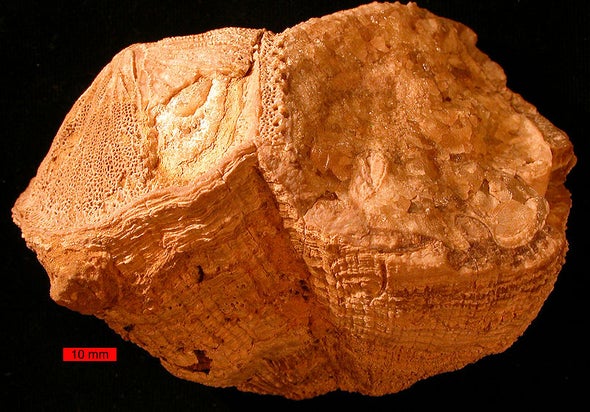Hi, I'm Scientific American assistant news editor Sarah Lewin Frasier. And here's a short piece from the June 2020 issue of the magazine, in the section called Advances: Dispatches from the Frontiers of Science, Technology and Medicine. The article is titled "Quick Hits," and it's a rundown of some noncoronavirus stories from around the globe.
From the U.S.:
A hiker found two rusted, unexploded bombs from 1935 on the Mauna Loa volcano on Hawaii's Big Island. The bombs had been intended to help divert lava flow during an eruption.
From France:
Researchers report dinosaur footprints up to 1.25 meters long on the roof of a cave, likely coming from a type of titanosaur. Geologic processes buried and shifted the shoreline footprints to the cave's ceiling, 500 meters deep.
From Kenya:
A 20-year experiment revealed that cattle-grazing areas frequented by elephants store almost twice as much carbon as areas that bar the animals; soil in these areas also has higher nutrient levels.
From Germany:
In a Leipzig waste site, scientists found a soil bacterium that can break down components of polyurethane—and survive the toxic chemicals released in the process.
In Oman:
Daily growth rings on a 70-million-year-old fossilized mollusk indicate that Earth turned faster at the time, squeezing 372 days into each year. The creature's former habitat, a shallow seabed, is now on a mountaintop.

In Australia:
Seven new peacock spider species—including one with a van Gogh Starry Night–like design—were discovered among crowd-sourced photographs from across the continent. The spiders are known for their vividly colored abdomens.
That was "Quick Hits." I'm Sarah Lewin Frasier.











